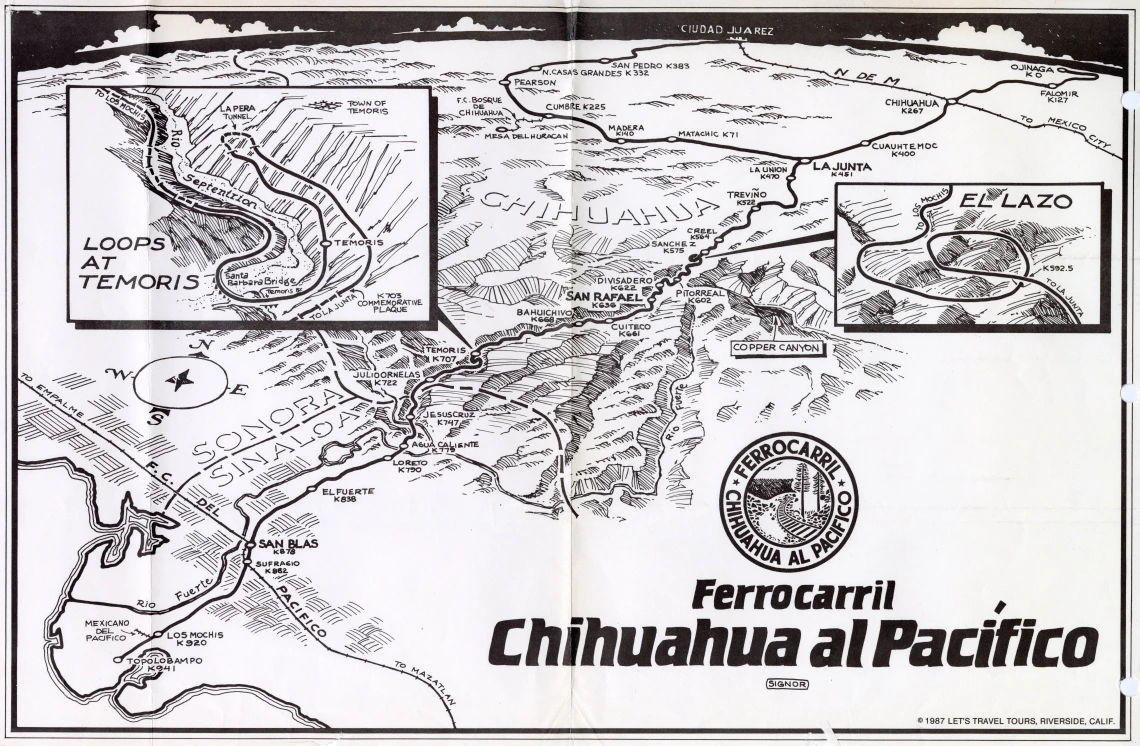Walter P. Parks papers

A map of the railroad line running from the Sonora/Sinaloa coastline through the Chihuahua region and further north. The Pearson region, written about extensively by Walter Parks, is denoted in the center topmost portion. The map is inaccurate and was created in 1987 by Let's Travel Tours, a Riverside, CA travel agency as a form of advertisement for the railway.
Collection area: Arizona and Southwest
Collection dates: circa 1995, 2003-2023
This collection consists of research material collected by Walter P. Parks for his and Richard D. O’Connor’s book They Called It Pearson: The History of Mata Ortiz and the Casas Grandes Valley. This research material is comprised of photocopied articles, theses, manuscripts, magazine articles, email correspondence, handwritten notes, and photographs.
The materials document a wide array of subjects related to the history of Mata Ortiz and the Casas Grandes Valley. Topics include the prehistoric development of the Casas Grandes Pueblo culture and the archaeological study of the region, as well as the period of Spanish colonization. The revolutionary movements of the early 1900s, with a focus on the role of the Mexico Northwestern Railway Company; its construction, operation, involvement in regional conflicts, and eventual destruction. The collection also addresses the Mormon diaspora through the area, the influence of American entrepreneurship, and the impact of Fred Stark Pearson, an American electrical engineer and entrepreneur who played a key role in developing the railway systems. Additionally, the materials explore the presence and impact of Chinese communities in the region.
Author Walter P. Parks is a graduate of Stanford University with a bachelor's in history and a master's in business administration. He sits on the board of directors of several museums and is the ex-president of Mission Inn Foundation, a nonprofit dedicated to the cultural preservation of southern California. He’s written two books prior to his most recent publication, Fliers' Wall of the Mission Inn in 1986, and The Miracle of Mata Ortiz in 2011. In 1984, Parks discovered the work of Juan Quezada while he was working as a consultant to Idyllwild Arts; this began a 27 year association with the potters of Mata Ortiz. He has written and lectured extensively on the Mata Ortiz ceramic phenomenon. He currently lives in Riverside, California.
A collection guide explains what's in a collection. New to using our collections? Learn how to use a collection guide.
Collection guideAccess this collection
Visit us in person to access materials from this collection. Our materials are one-of-a-kind and require special care, so they can’t be checked out or taken home.
How to cite
Learn how to cite and use materials from Special Collections in your research.
